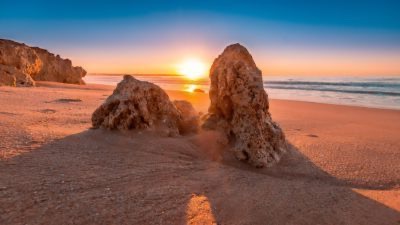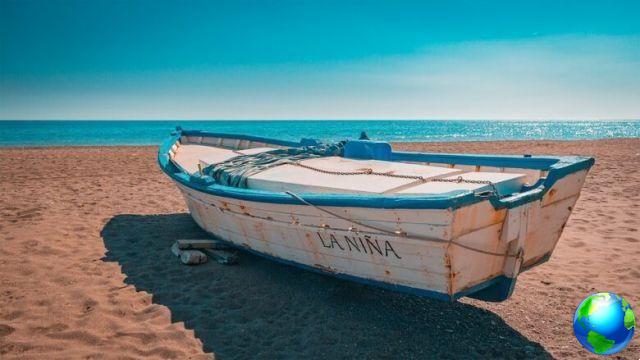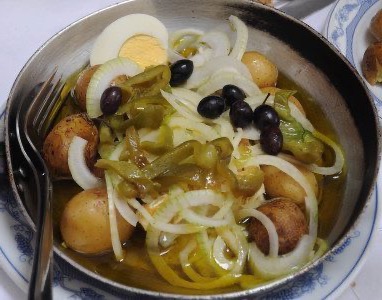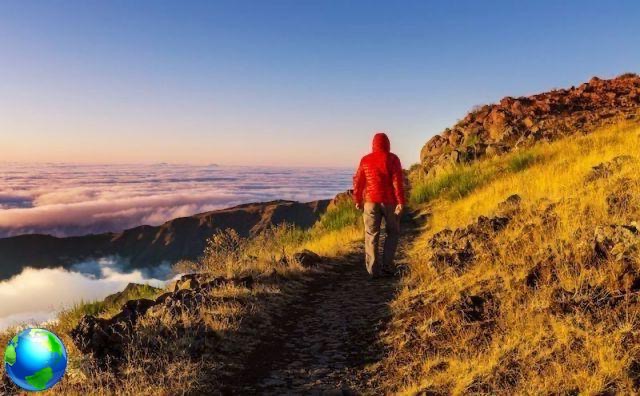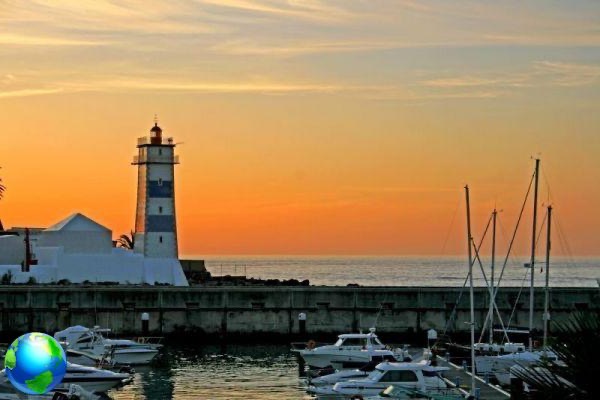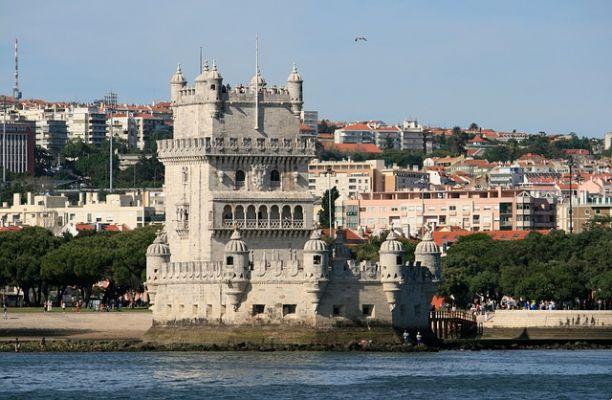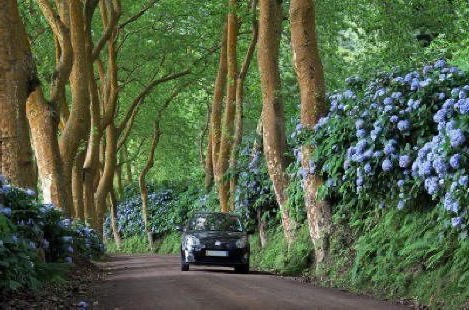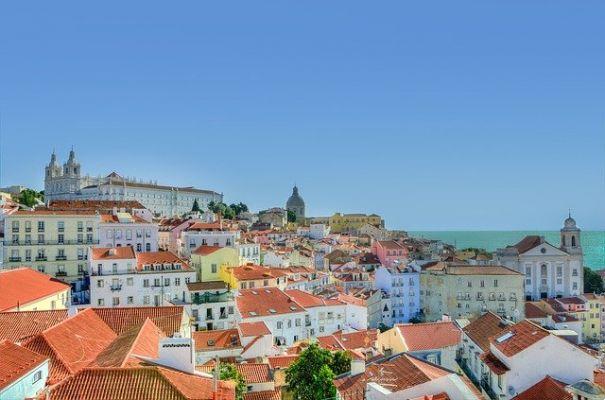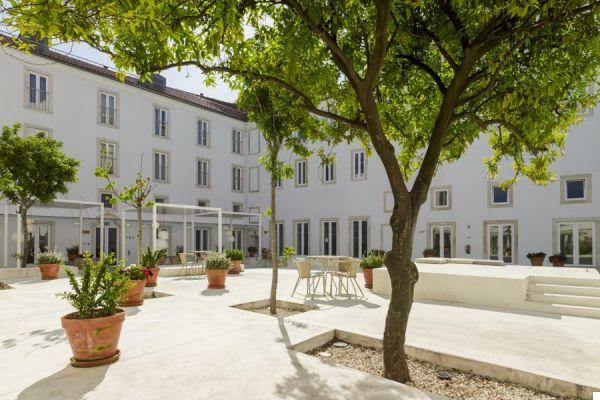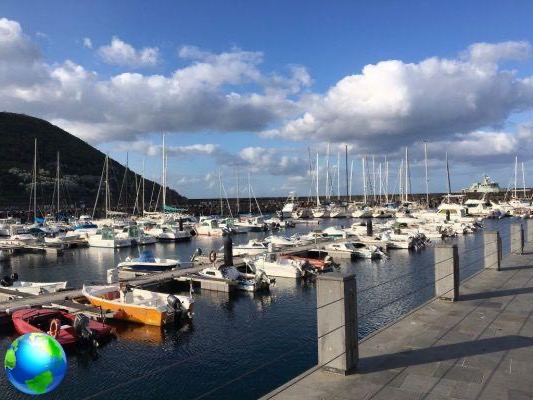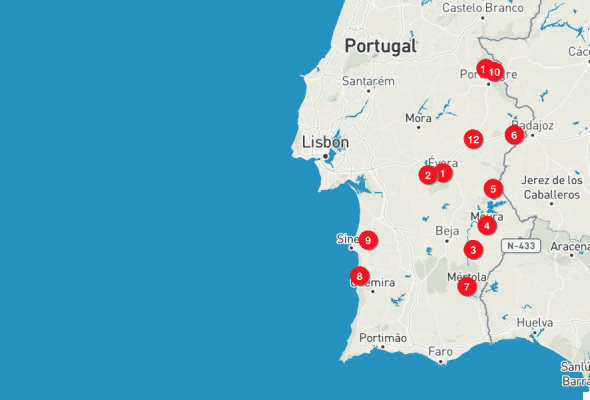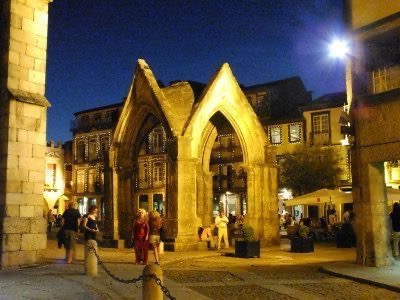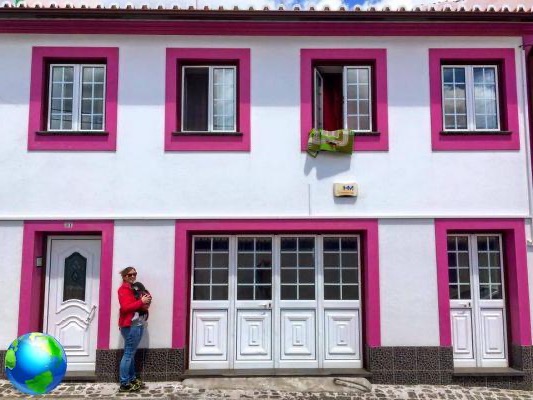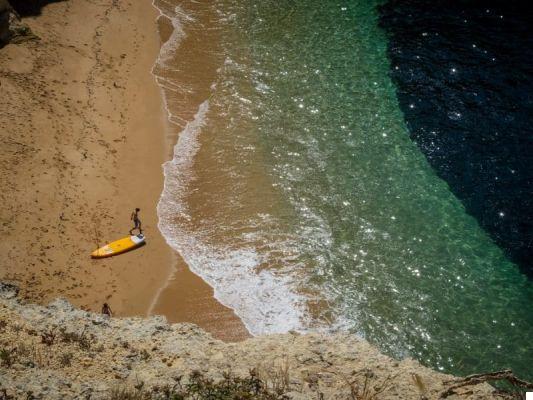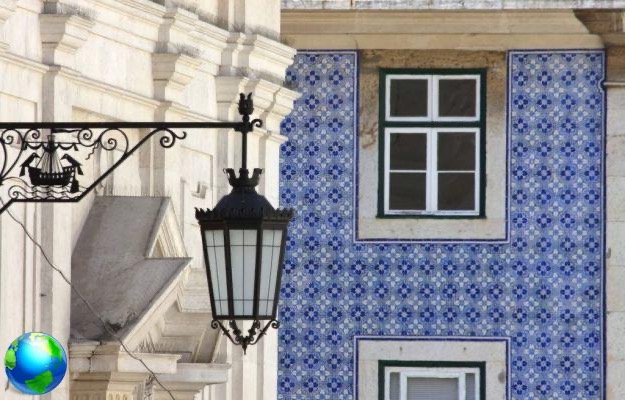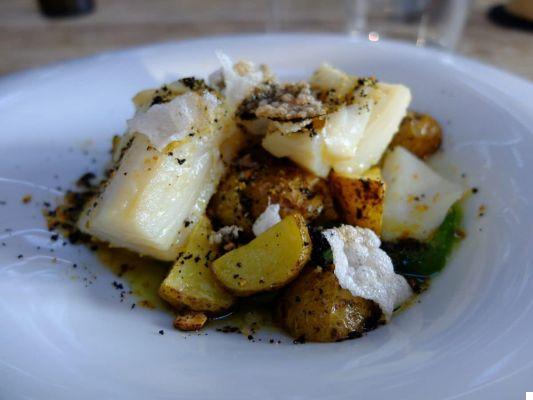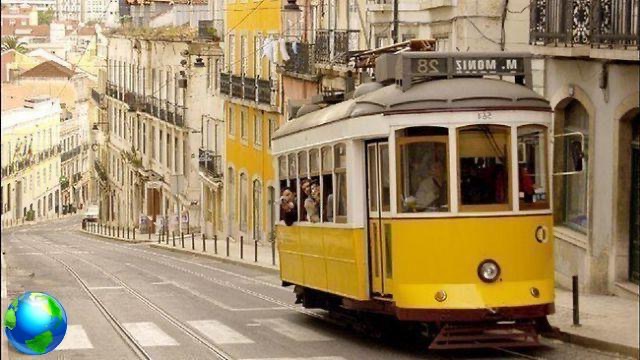Anyone who has followed me for a long time knows how much I love this country. Portugal is home to me, above all Lisbon (of which I have spoken to you in many articles), a city that I love and where I go often and willingly. I had mainly visited the rest of Portugal on business several years ago and hadn't explored it that much. This year, however, I decided to dedicate to Portugal in the center and ond my first solo on-the-road trip and I came back even more in love with this country (if ever there was a need!). The thing that struck me most is certainly the light, a warm, incredible light, which Pessoa described very well in his books. That light is found everywhere, especially at sunset, whether in front of the sea or inland, and it is a light that gives peace and so much beauty. Besides her, of course, there are beautiful places, cities like Sintra, Obidos, Evora or Mertola, the immense beaches on the Atlantic Ocean, the cliffs of the Algarve and much more. Portugal is also perfect to be explored on the road, the roads are beautiful and with little traffic, and there are many still wild places that would be really difficult to reach without a car. In this article I propose you 2 itineraries for a road trip to Portugal, one of 10 days and one of 14 days; both depart from Lisbon, climb a little north into the Extremadura region and then cross the Alentejo and the Algarve. Next time it will be up to the north, stay tuned!
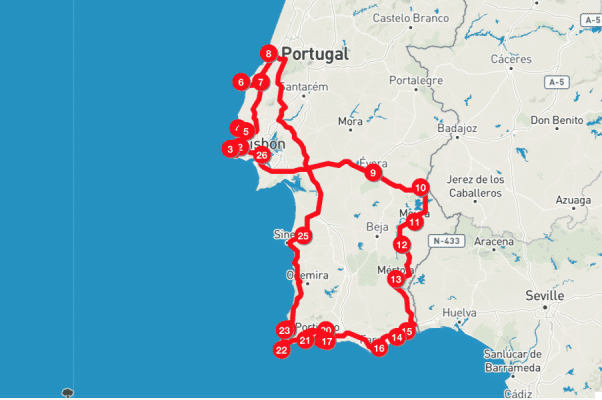
When to go to Portugal
The best times to make this trip to Portugal on the road are certainly the intermediate seasons: spring and autumn. Winter might be good for visiting the Algarve, but not for visiting the coast of Ericeira, Nazaré, etcetera; there in winter it can be quite cold and a great wind blows. Summer, on the other hand, is to be avoided both for the Alentejo (you would find 50 °!) And for the Algarve (at least August, because it is the month in which even the Portuguese have their holidays and the beaches are filled to excess). By eye I would tell you that the best months ever to make this trip are April, May, June, September and October. To see the very high waves a Nazareth instead the months in which it is more likely to see them are October and November.
How to get around Portugal
In Car
The best way to get around Portugal is undoubtedly the car, which guarantees you maximum freedom and allows you to reach even the most remote places in the country. The roads are beautiful and with little traffic. For car rental I always use the Rentalcars website and I chose the Guerin company, with which I felt comfortable and I picked up the car at the Lisbon airport. To avoid scams, however, remember to always check the votes and reviews that users give to the various car rental companies. You can find them on the Rentalcars website itself, but you can also double check on Trustpilot. Some companies offer bargain prices but the service is bad.
How motorway tolls work in Portugal
If you decide to rent a car and intend to use the toll highways (indicated with the letter A) you should also rent the “Telepass” (it is called in another way in Portugal, but it works the same). The payment of tolls is quite cumbersome because, in fact, you do not pay at the toll booths, but you have to go to pay at the post office later. Payment must be made within 5 days. Some motorways (including the main one in the Algarve) do not even have toll booths but simply cameras that take the license plate number. All rental companies allow you to rent the Telepass for less than 2 euros per day (I think I spent 1,65 euros / day) and will ask you for a credit card to block 100 euros from which the tolls will then be deducted. With the Telepass, when you meet a toll booth, simply go into the dedicated lane (indicated as “Via Verde”, usually the one on the left) and on a display you will see how much you have spent. The cost of tolls, with the same distance, is almost half that in Spain.
By bus
Several bus companies (such as the Rede-Expressos or the Eva-Bus) serve the tourist resorts of Portugal and several small villages within, but I don't recommend exploring the country by bus, unless you really have a lot of time to go. arrangement.

Health insurance is recommended
Being in Europe, as Spanish citizens we have the right to health care, but there are specific conditions and ceilings. My advice is to still take a classic medical-luggage insurance that can cover you during the trip, even for Covid-19. I am very happy with many insurance companies, a site that compares the policies of different companies and proposes the most convenient policy for that particular trip. To do this you will have to enter the data relating to your trip and they will send you an email with the best proposal that you can then buy directly online (!!!). All travel insurances also cover medical assistance in the event of a coronavirus infection, including testing if necessary. There is also coverage for the extension of the stay in the hotel due to the quarantine. Likewise, the trip cancellation guarantee includes coverage for illness or death of the traveler or a family member due to COVID-19.

Portugal on the road: 10 stages not to be missed
1. Lisbon
Any trip to Portugal cannot be ignored Lisbon. The capital of Portugal is a city of rare beauty and I, you know, are madly in love with it! In Lisbon I have dedicated several articles (you can find them all here) in which I have told you a little about everything there is to see and do. Being a large city, the visit of Lisbon requires at least 3 days (at least if you are going there for the first time), which you will eventually have to add to the 10 days of the itinerary. If you have already been there, you can also rent a car directly at the airport and head straight to Sintra or Ericeira.


2. Sintra and Cabo da Roca
The hilltop town of Sintra it is located half an hour's drive from Lisbon and, thanks to its perfect climate, it has become, since the 800th century, the retreat of many rich and famous families in Portugal. Moreover, with its beauty, Sintra has inspired several European artists and writers such as Hans Christian Andersen or the English poet Lord Byron. In 1995 it was declared UNESCO World Heritage Site and in recent years it has become by far one of the richest and most expensive resorts in Portugal. Find all the info on the things to see in Sintra inarticle “Sintra: what to see in the city of fairytale castles". While you have arrived in Sintra, it is worth the stretch to Cabo da Roca, the westernmost point of Continental Europe. At the tip of the cliff is the lighthouse and, of course, a plaque.



3. Ericeira and Mafra
The third stop on this road trip to Portugal is Ericeira, one of the hottest locations right now among surfers and digital nomads across half of Europe. Ericeira overlooks the Atlantic and in 1800 it was from here that the ships sailed for Brazil or Scotland. Today it is a beautiful town of white houses decorated in blue, it is very lively and lively, full of bars and restaurants. Ericeira is located just south of the first World Surf Reserve d'Europa, has hosted the world surfing championships and its beaches are very popular with those who want to ride the waves of the Atlantic. I used it as a base for 3 nights to visit Sintra, Obidos, Peniche and Nazaré and I was very happy with the choice. A few kilometers from Ericeira there is also the Monasteiro National Palace of Mafra, a gigantic royal palace in the Baroque style with over 1200 rooms, 5000 doors and a beautiful library.




4. Obidos and Nazareth
Going north along the coast you will meet first Peniche and then Nazareth, two other very famous locations for surfing. The first for those who have to learn, the second for super-PROs. In fact, thanks to an underwater canyon, in front of Nazaré there are some of the biggest waves in the world and in recent years the big surfers have tested themselves with these 20-30 meter waves. The highest waves normally occur in autumn and are a strong attraction for all fans of this sport (they can usually be predicted 1-2 weeks in advance). There is little inside instead Obidos, a must for any road trip to Portugal. We are talking about a town-jewel enclosed by medieval walls with all the cobbled streets and whitewashed houses (not surprisingly a UNESCO World Heritage Site). Obidos is also the home of ginginha, the typical cherry liqueur.

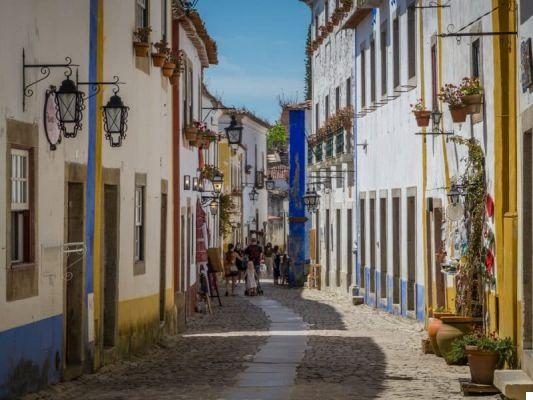


5. Evora and Monsaraz
From Extremadura and the coast we now move inland, in the heart ofAlentejo, to visit its capital, that is Evora, which is one of the most beautiful and best preserved historic cities in Portugal. Founded by the Celts, Evora was later fortified by the Romans and its position on the trade routes allowed it to thrive. Today Evora is a city with a beautiful historic center enclosed within medieval walls and preserves a Roman temple (the temple of Diana), several 1559th century residences, the second oldest university in Portugal after Coimbra (dates back to 1!) , a medieval aqueduct and several churches that are worth seeing. Less than an hour by car, on the border with Spain there is then Monsaraz, a small jewel made of whitewashed houses, with a few restaurants and the remains of a castle from which you can enjoy a magnificent view of the lake created by the Alqueva dam and on the surrounding fields. Find more information in the article on Alentejo.



6. Moura, Serpa e Mertola
These 3 stages of the road trip to Portugal are located in the heart of the Alentejo, the largest region of Portugal, all close to the Spanish border. This area of Portugal is mainly rural, you will pass through forests of cork trees (the Alentejo provides about 50% of the entire cork supply in the world!) And fields of wheat and you will see lots of storks. Moura it's the least interesting of the 3, but it's worth a coffee stop on the way down. Serpa it is a beautiful fortified town with a castle and very nice alleys, but it is Mertola the most beautiful. Perched on a spur on the confluence of the Guadiana and Oeiras rivers, it is in a spectacular position to say the least! Find more information in the article on Alentejo.

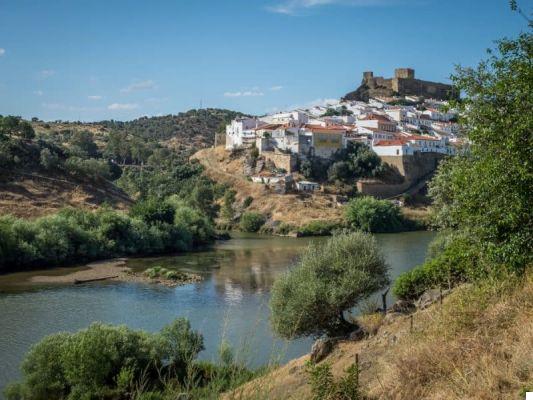

7. Tavira and Olhao
At this point we have come in Algarve and the first place that deserves a stop is definitely Tavira, which is located inland, and extends along the banks of the Rio Gilao River. The old town is quite compact and is the classic Algarve town with whitewashed houses and wrought iron balconies. Tavira can also be the perfect base for exploring the entire coast from the Spanish border to Olhao and Faro. Definitely not to be missed old nose, where there is one of the beaches classified among the most beautiful in the world, and the islands of Armona and Culatra in front of Olhao. Find more detailed information on the various beaches / locations in the article on the Algarve.
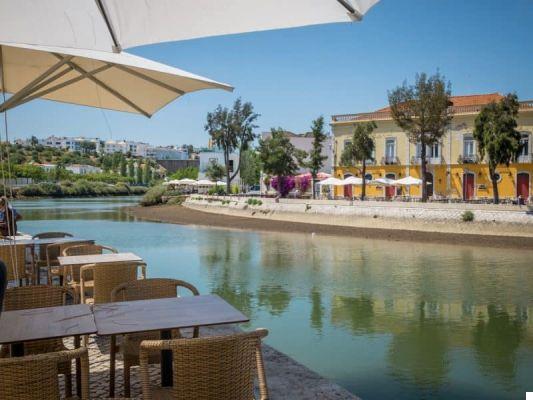


8. Lagos, Benagil and Carvoeiro
We now enter the heart of the Algarve, where the most famous and popular locations in the region are located (such as Albufeira and Lagos), but also the most iconic beaches and caves. The must-see stretch of coast is the one it goes from Praia da Marinha to Vale Centianes beach, consisting of a high cliff in red sandstone interrupted occasionally by small beaches, paradisiacal coves and some caves (including the famous Benagil cave). But also the beaches that are located on the headland of Lagos will leave you breathless, above all Praia de Dona Ana, Praia do Camilo and Ponta de Piedade. The villages like Carvoeiro or Ferragudo they are also not far behind. Find more detailed information on the various beaches / locations in the article on the Algarve.



9. Sagres, Carrapateira and Aljezur
Proceeding westwards you reach it Cape of Sao Vicente, which is the most southwestern point of the European continent, another unmissable stop on this road trip to Portugal. A few kilometers from there it is Sagres, in a particularly scenic location, which is the town of choice for backpackers and surfers. After Sagres you arrive on the west coast, the one that directly overlooks the Atlantic Ocean. This stretch of the Algarve coast was designated in 1995 Southwest Alentejo Natural Park, that is, it is a Natural Reserve, and has guaranteed the protection of the territory. This area is the wildest in the Algarve, with incredible and very wide beaches, and was my favorite of the whole trip. Find more detailed information on the various beaches / locations in the article on the Algarve.



10. Vila Nova de Milfontes and Santiago do Cacem
Going back to Lisbon, the last stages of my road trip to Portugal were Vila Nova de Milfontes e Santiago do Cacem (where I slept before returning to the airport in Lisbon and leaving). The first is the most famous and popular seaside town in Alentejo, a place much loved by Portuguese families (many have second homes here) and can be very crowded in summer, but it is worth a stop. Santiago do Cacem a nice little town without too many pretensions, dominated (for a change) by a castle. However, many reach it because the famous path begins here Rota Vicentina, a 340km footpath that runs from here to Cabo Sao Vicente in the Algarve.


Road trip in Portugal: where to sleep
The following are the places where I slept during the trip and they are all structures that I can recommend:
- Patio House by Shiadu (Lisbon). A very nice and familiar traditional structure where the rooms are located around a beautiful patio (where breakfast is offered, always included in the price). All the rooms have modern and well-kept furnishings, they are all air conditioned and equipped with wooden floors. An almost magical place!
- Action Ericeira Lodge (Ericeira): A super nice little place right in the center of Ericeira. Hostel mood, but with double / single rooms and ensuite bathroom. Super recommended !!!
- Burgos Guest House (Èvora): a small hotel in a renovated building in the historic center. Very nice and very comfortable to walk around the city.
- Quita do Vau (Mèrtola): perhaps the hotel I loved the most during the whole trip I made in Portugal. The hotel is new, beautiful and in a great location overlooking Mertola and the river. The infinity pool is also top.
- Quinta do Caracol (Tavira): this hotel in Tavira is truly a gem. It is a traditional structure surrounded by an olive grove and 2 steps from the center. A corner of paradise, really!
- Dom Manuel I Charming Residence (lakes): a really convenient hotel for walking both to the center of Lagos and to the beaches towards Punta da Piedade. The rooms are nice and the breakfast is one of the best you can find in a hotel.
- Santiago Hotel Cooking & Nature (Santiago do Cacem): A high-end hotel (4 stars) that I gifted myself on the last night. Very nice and full comfort, with a very good restaurant and a view over the village of Santiago do Cacém.
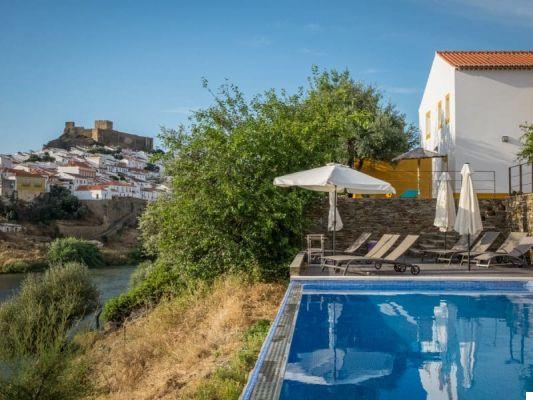
10-day Southern Portugal itinerary (Estremadura, Alentejo, Algarve)
- Lisbon
- Sintra and Cabo da Roca
- Ericeira and Mafra
- Obidos and Nazarè
- Evora and Monsaraz
- Moura, Serpa and Mertola
- Tavira
- Tavira
- Lagos
- Lisbon
Southern Portugal itinerary of 14 days
- Lisbon
- Sintra and Cabo de Roca
- Ericeira and Mafra
- Obidos and Nazarè
- Tomar and Castelo de Vide/Elvas
- Evora and Monsaraz
- Moura, Serpa and Mertola
- Tavira
- Tavira
- Lagos
- Lagos
- Lagos/Lisbon
- Lisbon
- Lisbon

You might also be interested in these other articles I wrote about Portugal:
- Lisbon: what to see in 3 days
- Unusual Lisbon: 15 places to see to feel local
- Where to sleep in Lisbon: better neighborhoods and hotels
- How to organize a trip to the Azores: when to go, how and where
- Azores: what to see and what to do in these dream islands
- What to see in the Algarve: a road trip in southern Portugal
- Alentejo (Portugal): what to see
- Sintra: what to see in the city of fairytale castles
- Madeira: what to see on the island of eternal spring





